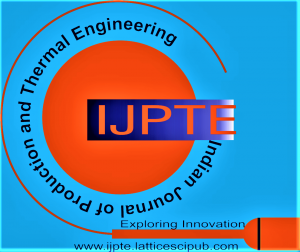![]()
Research on the Effect of Air Speed on the Condensation Process on the Air-Water Separator
Nguyen Xuan Binh
Nguyen Xuan Binh, Department of Energy Engineering, School of Electrical and Electronics Engineering, Hanoi University of Industry, Hanoi, Vietnam.
Manuscript received on 29 April 2025 | First Revised Manuscript received on 23 May 2025 | Second Revised Manuscript received on 30 May 2025 | Manuscript Accepted on 15 June 2025 | Manuscript published on 30 June 2025 | PP: 1-5 | Volume-5 Issue-4, June 2025 | Retrieval Number: 100.1/ijpte.D202705040625 | DOI: 10.54105/ijpte.D2027.05040625
Open Access | Editorial and Publishing Policies | Cite | Zenodo | OJS | Indexing and Abstracting
© The Authors. Published by Lattice Science Publication (LSP). This is an open access article under the CC-BY-NC-ND license (http://creativecommons.org/licenses/by-nc-nd/4.0/)
Abstract: Atmospheric water recovery (AWH) is a promising solution to overcome the shortage of clean water in arid regions, especially highland and desertified areas. There are many solutions to recover water from the atmosphere, such as absorption, adsorption, and various condensation-based technologies (condense and recover water), such as fog nets. These nets will retain water droplets when fog passes through, and using good hygroscopic materials, they will then recover water in the moisture-retaining materials. The solution of direct condensation of water vapour by creating cold surfaces with low temperatures also emerges as a promising option for energy savings. This paper presents the calculation process for selecting suitable equipment to build a model of an air-water separator with a compressor power of 1 HP. The study focuses on the influence of air velocity on the water condensation process on the surface of an evaporator with a vertical, smooth-tube condensing surface. The system’s test results were obtained under different operating modes, including the surface temperature of the evaporator changing in response to the speed of change in air humidity conditions, which were approximately 45% in Hanoi, Vietnam. The experiment demonstrates that the system can operate effectively and separate water efficiently in a relative humidity condition of roughly 45%, which is a limitation of other systems. The results of this study also serve as the basis for future research into building larger-scale systems.
Keywords: AWH, Water Condensation Process, Vertical Cylindrical Evaporator, Low Temperatures.
Scope of the Article: Reliability and Quality Engineering
